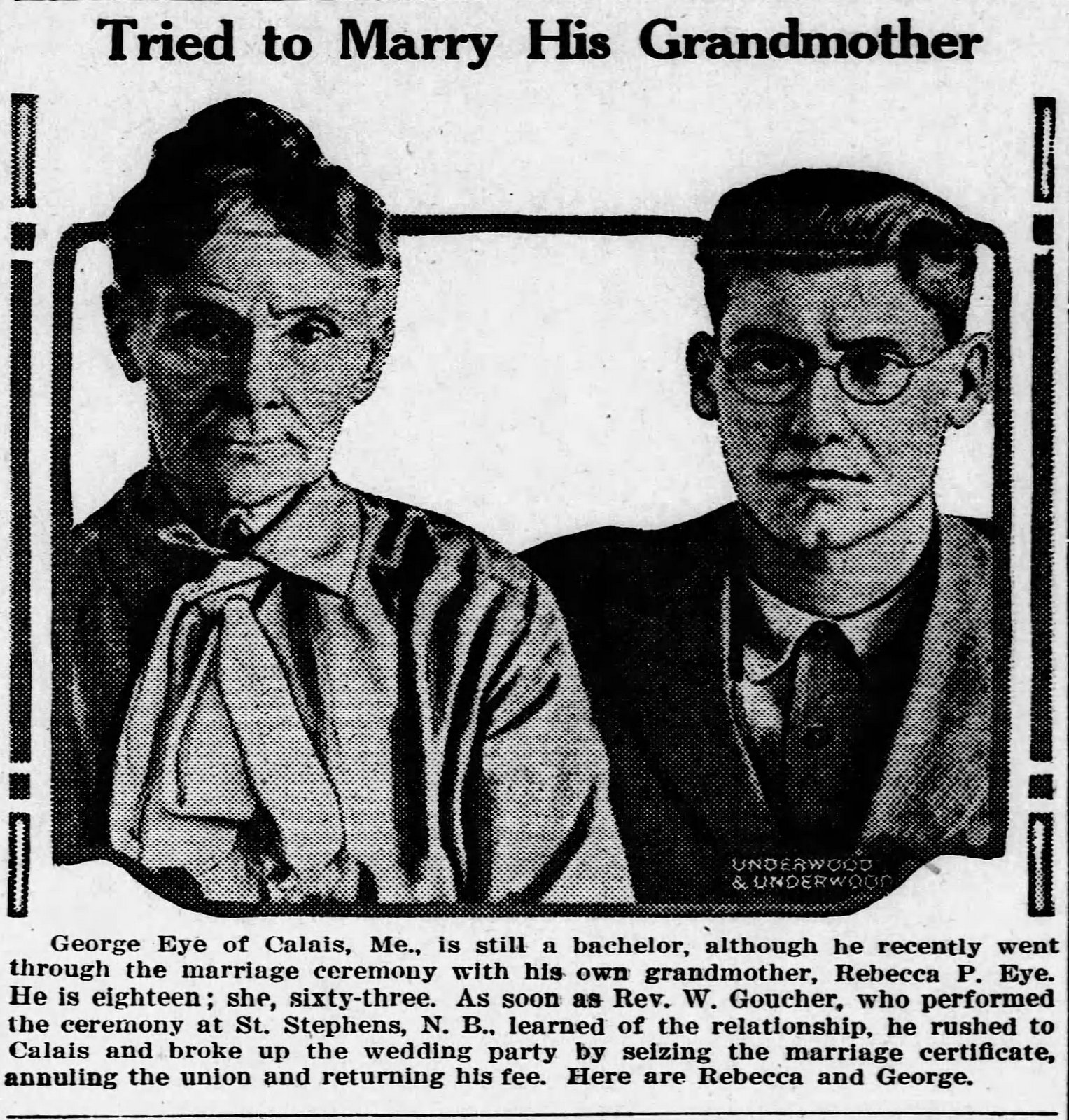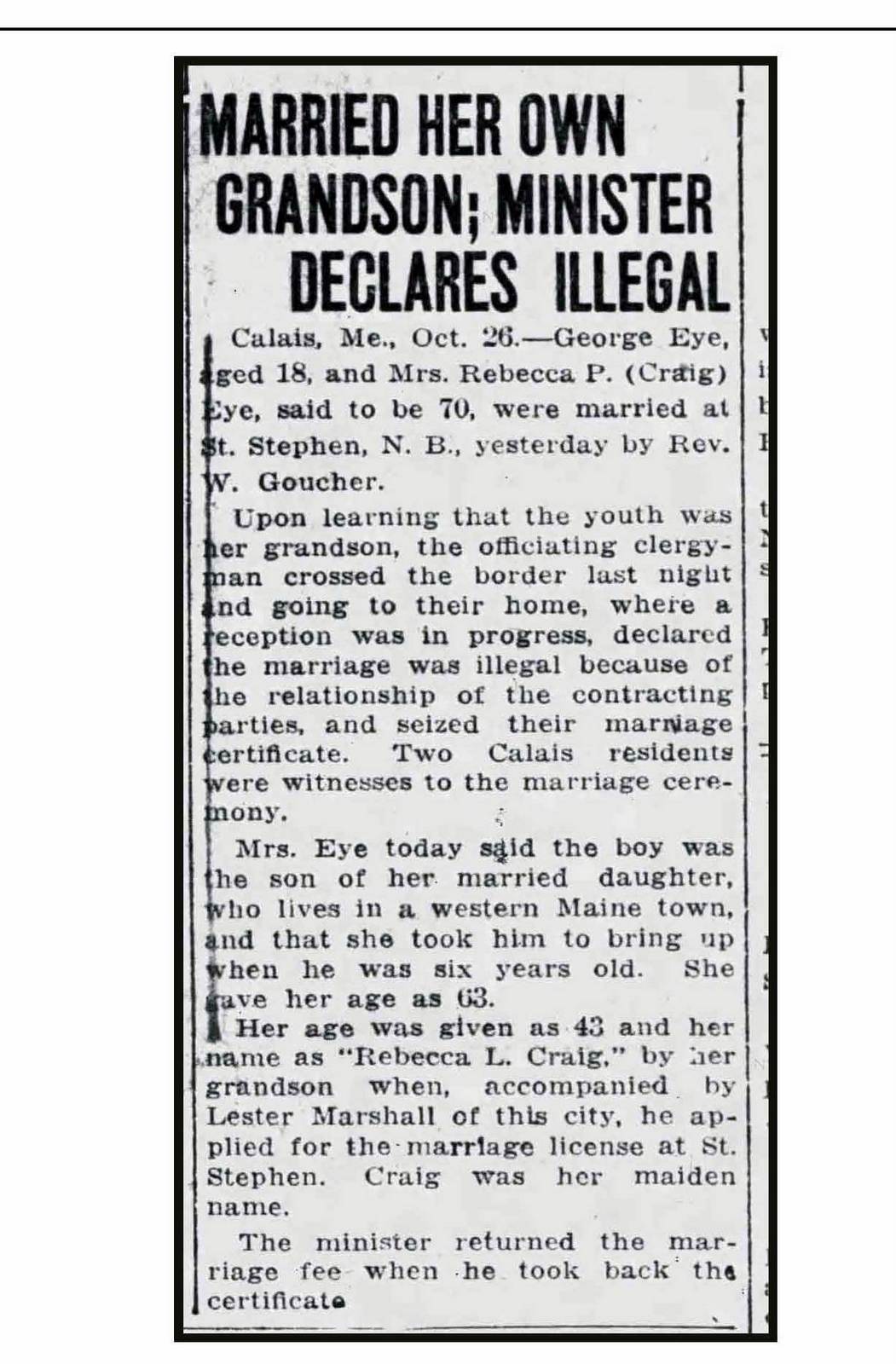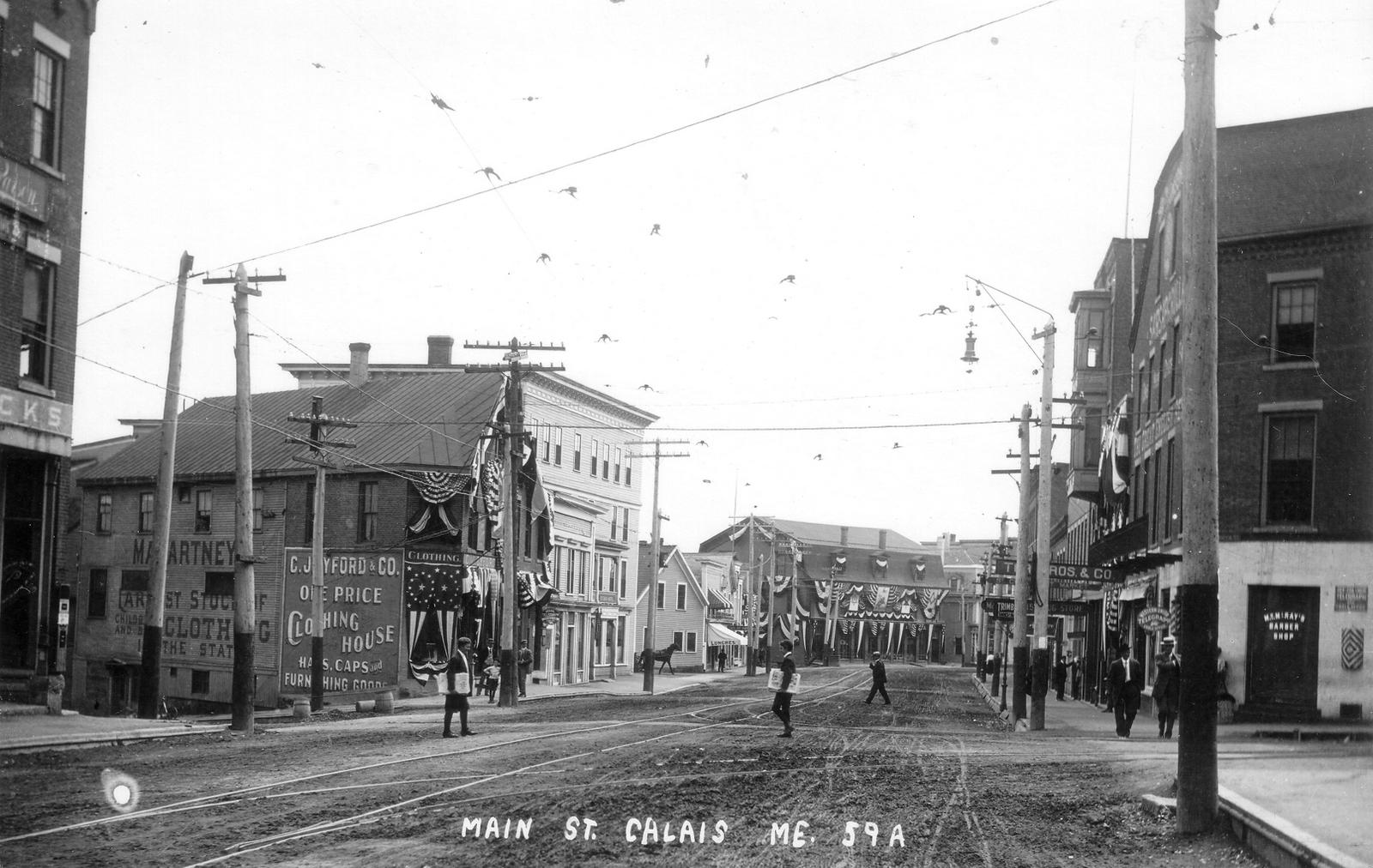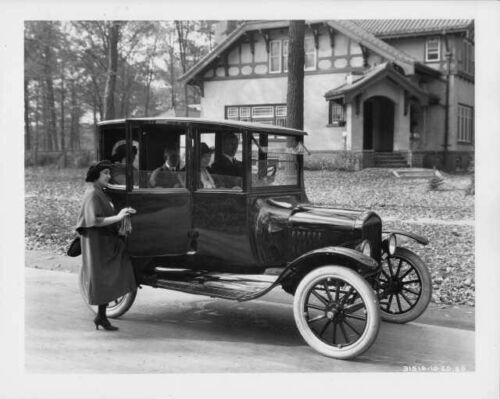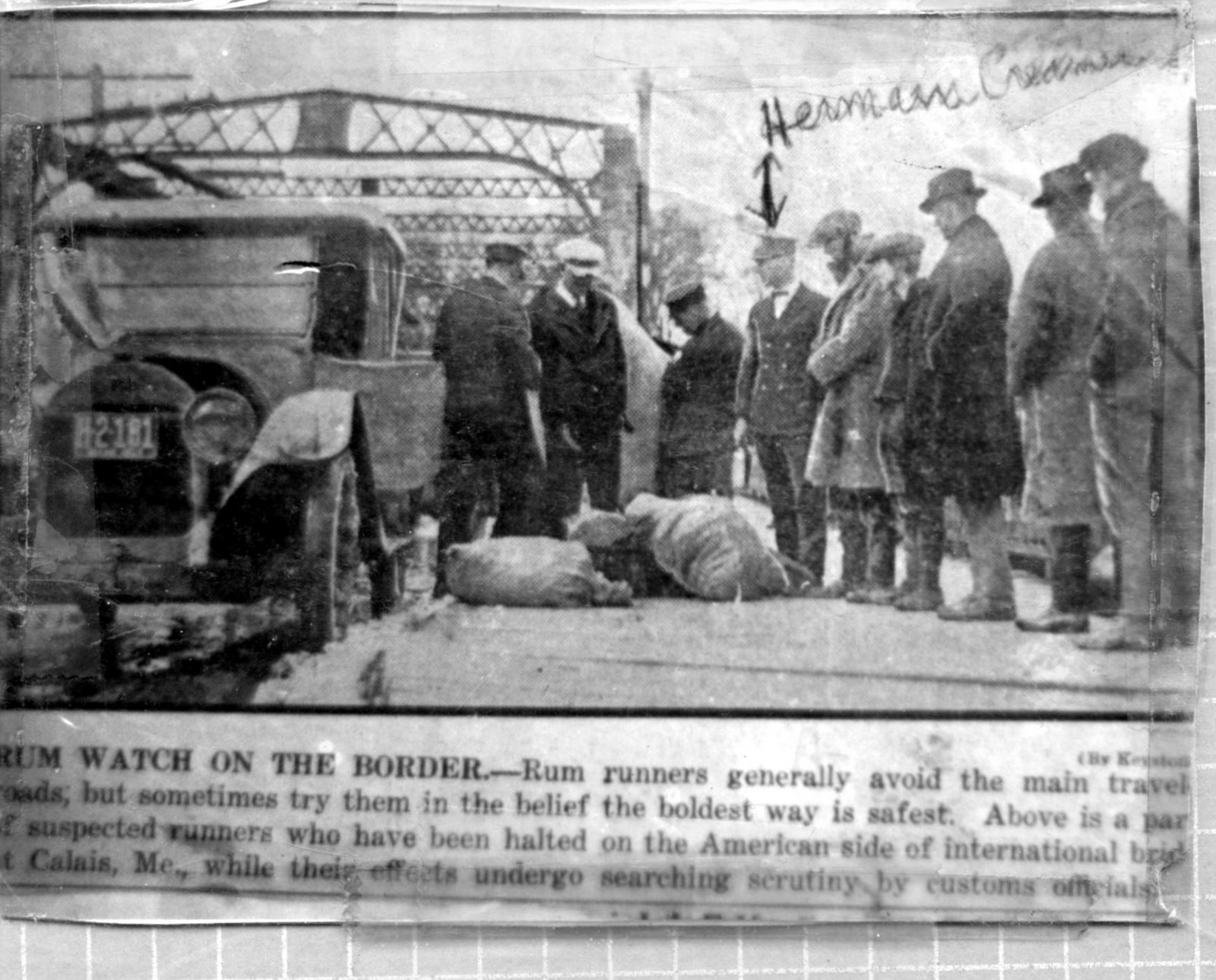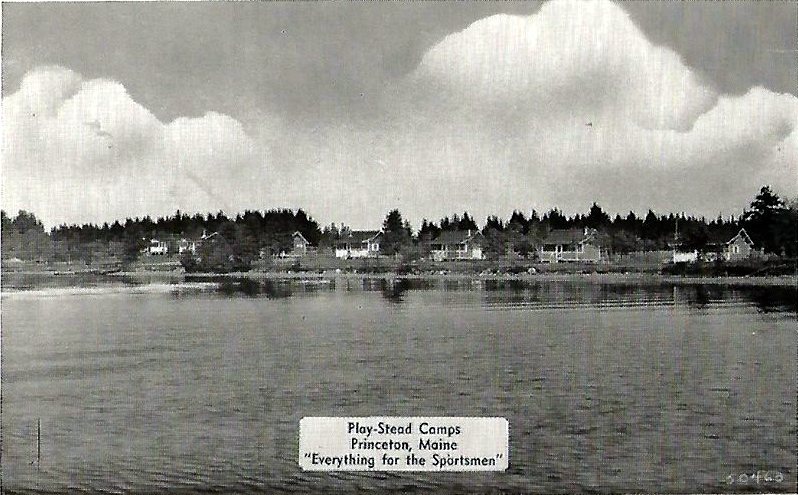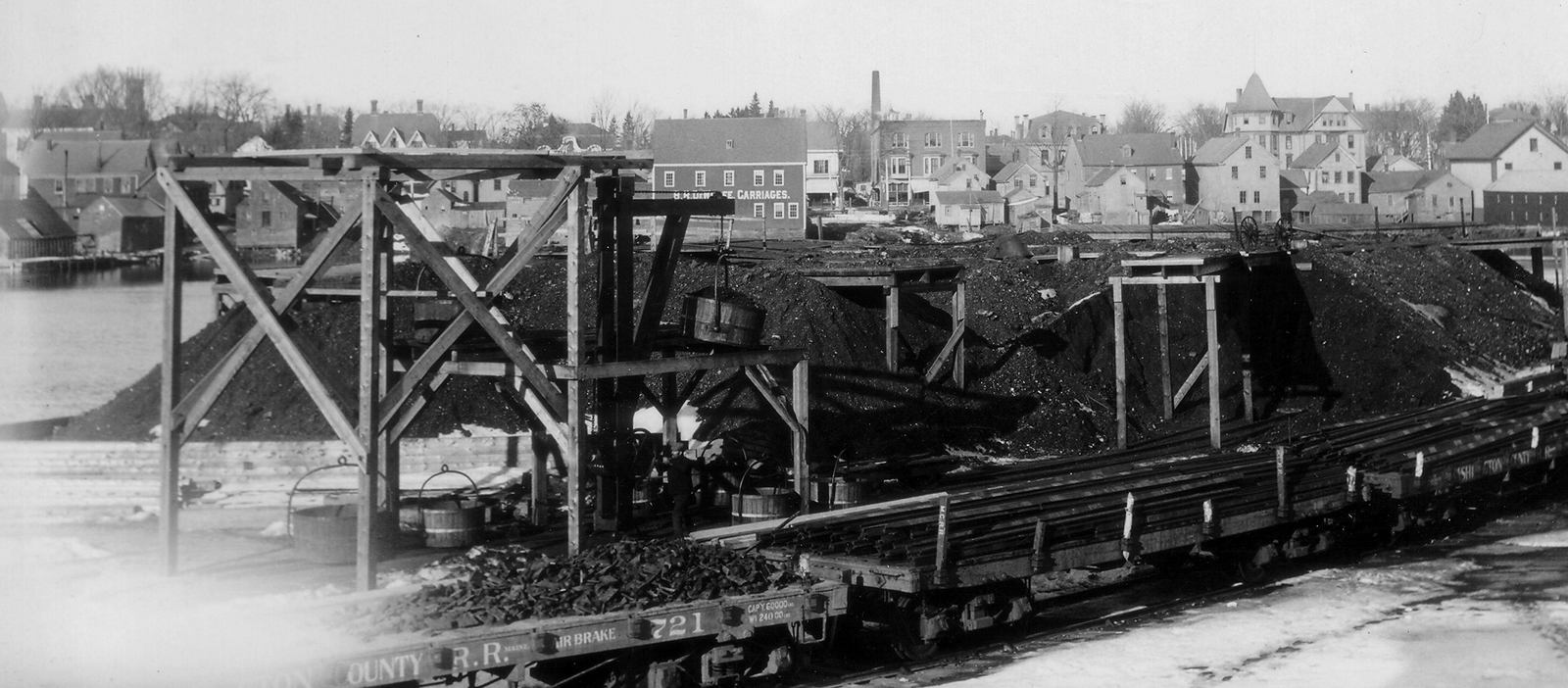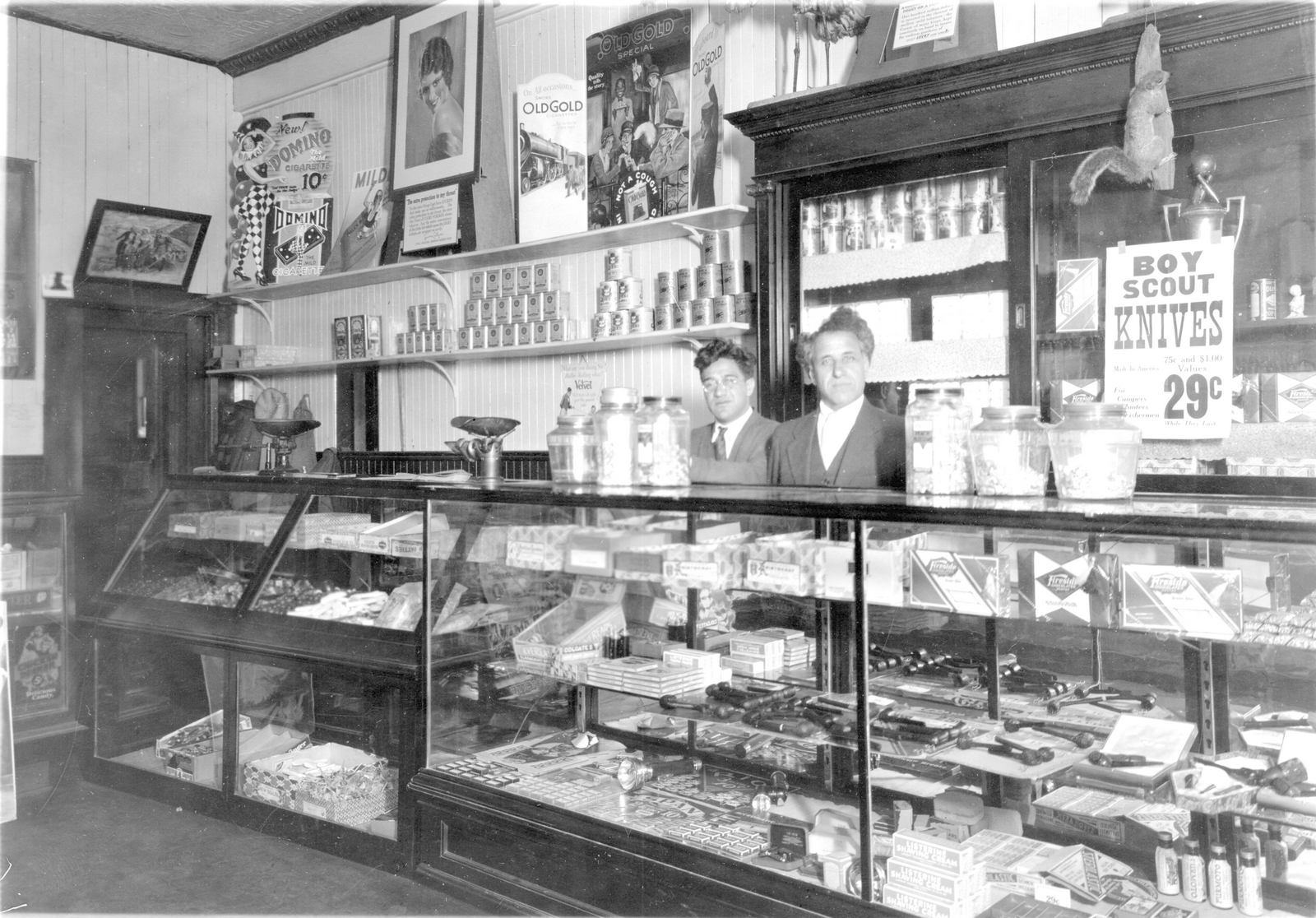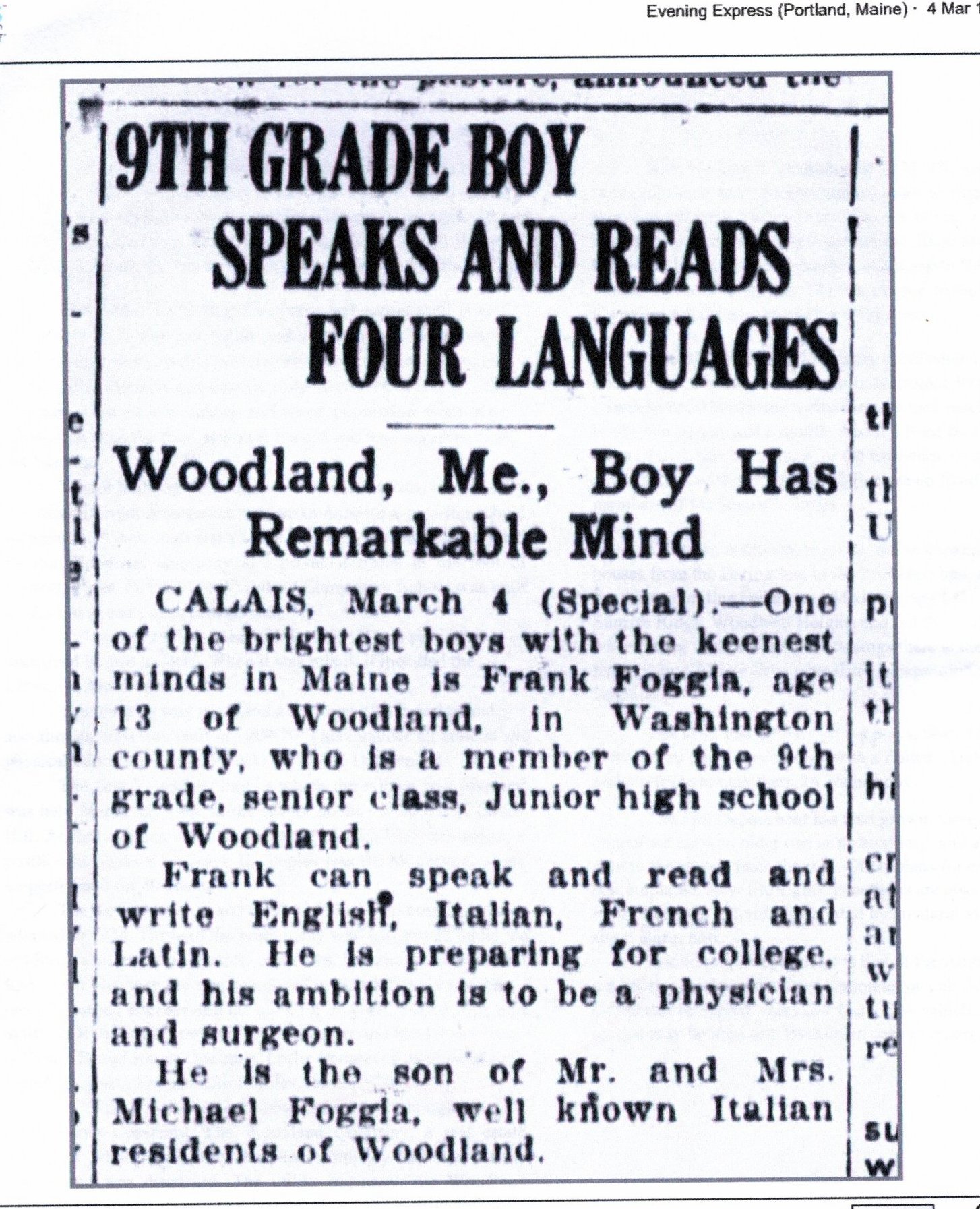Main Street Calais about 1900 North Street to right, St. Croix Hotel to left
The St. Croix Valley 100 years ago was a far different place than it is today. Calais, St. Stephen, Eastport and all the outlying communities had at least twice today’s population. Main streets were bustling with commerce, the Cotton Mill on the Canadian side, shoe factories in Calais and the Woodland Mill were large employers and crossing the border was almost as easy as crossing the street to visit a neighbor. The goings on in the St. Croix Valley were often reported in newspapers across the U.S. and in Canada. We thought it would be entertaining to report some of the odd, interesting and sometimes sad accounts that appeared in national papers about the St. Croix Valley in 1922.
1922 Model T
Many national newspapers carried the article below about G.S. Estey’s trip cross country from Seattle to Calais. Such a trip was quite a feat of endurance in those days for both the car and the passengers. We don’t know the make and model of his auto, but the Model T was the most popular vehicle of the era. Likely Estey drove a touring model given the number of passengers and luggage. Today the trip takes 49 hours and covers 3076 miles.
Waterville Sentinel August 4, 1922
Twenty-six days were consumed by G S Estey of Seattle Wash formerly of Calais in making the cross-continent trip in his automobile from Seattle Washington to Calais Me a distance of 5201 miles. Snow was encountered in the Bitter Root Mountains in Idaho reaching the top of the headlights at times. Calais is Mr. Estey’s hometown and he left there five years ago. Five passengers made the trip east and 400 pounds of baggage were carried. A total of 250 gallons of gasoline were used and the prices along the route ranged from 22 cents a gallon in Chicago to 37 cents in Idaho and Montana. The machine averaged 20 miles to a gallon on the trip and the total repair bill was only $5.25
1922 booze confiscated at Calais Bridge
In 1920 Prohibition finally became the law in the United States. It had been the law in Maine for decades although with a wet Canada nearly within reach (it is said it was possible to walk across the river on the decks of ships at anchor) smuggling booze had always been a cottage industry. After prohibition there was real money to be made. Typical of the arrest of a bootlegger is the case of J. Hyland of Bangor who landed his craft just below Devil’s Head on the U.S. side loaded with 300 quarts of Canadian whiskey.
Kennebec Journal July 12, 1922:
Arrest Hiland After Landing 1300 Quarts Whisky at Calais
Calais Me July 12 —
J Hiland was arrested by United States customs officers early today soon after he was alleged to have landed a boat with 300 quarts of whiskey at Whalen’s Landing. Hiland will be taken to Bangor for arraignment tonight. His home was there. The whiskey was said to have been brought from St Stephen N B across the St Croix River from here.
The ease of getting booze across the river attracted not only big-time smugglers from away but locals supplementing their incomes. Consider the case 1922 case of Princeton farmers Fred and Priscilla Johnson and William and Claire Plaisted who became involved with some Portland rumrunners and paid the price.
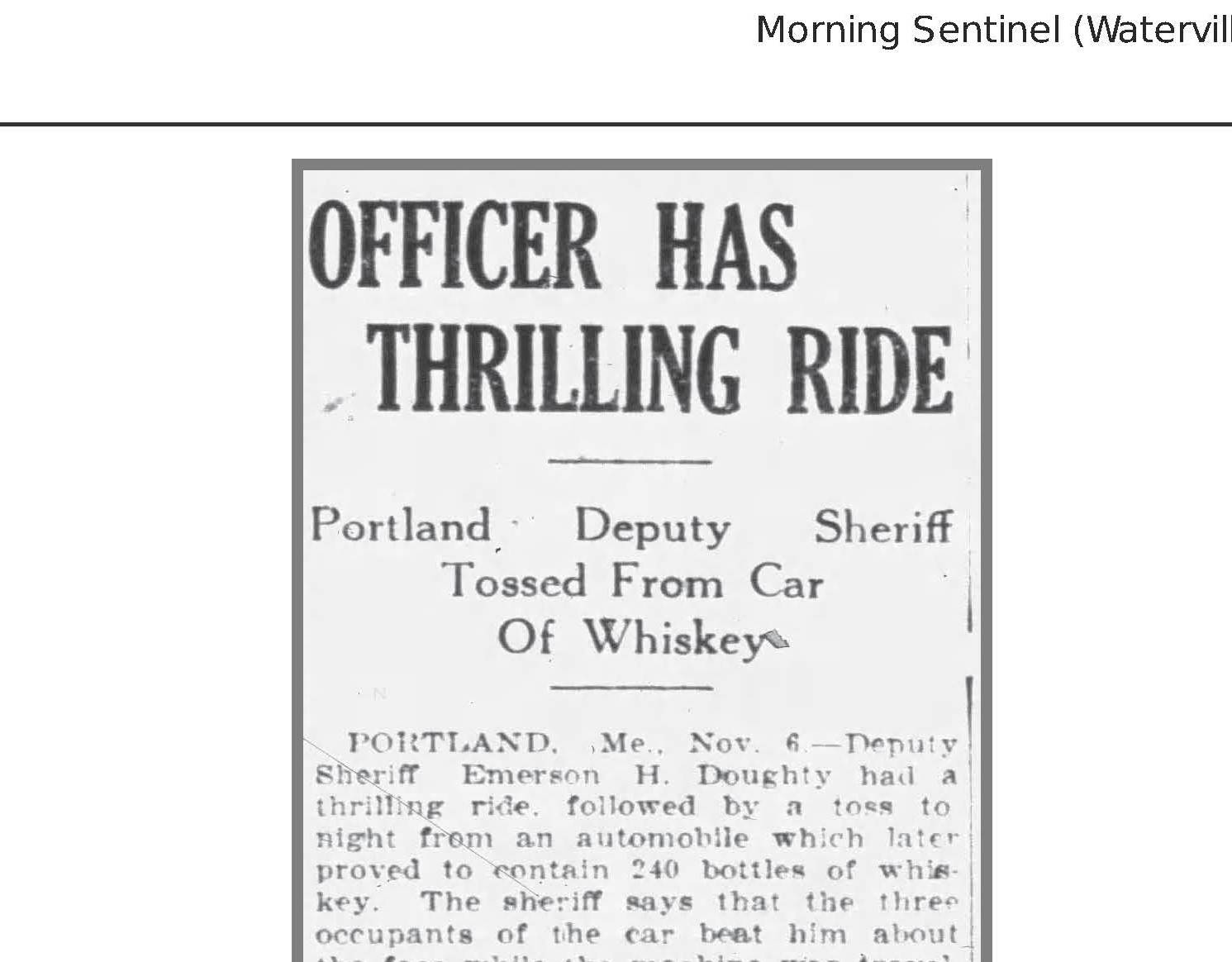
November 7, 1922, Waterville Sentinel:
OFFICER HAS THRILLING RIDE
Deputy Sheriff Tossed from Car Of Whiskeys operation
PORTLAND Me Nov 6— Deputy Emerson H Doughty had a thrilling ride followed by a toss to the night from an automobile which later proved to contain 240 bottles of whiskey. The sheriff says that the three occupants of the car beat him about the face while the machine was traveling at a rate of 70 miles an hour. The sheriff’s pluck in hanging on to the speeding car so unnerved the men that they abandoned their new touring car. Its occupants had not been located up to a late hour tonight.
Doughty is uninjured except for a sprained thumb and a bump on his face. The deputy jumped from the car to the running board of the larger machine as the car was going at least 30 miles an hour. The driver of a sedan was entered by two women who sheriffs say alighted from the liquor laden car and the women were found and questioned.
The driver gave his name as Herbert Hartin of 226 Cumberland Avenue. The two women said that they were Mrs. Fred C. Johnson and Mrs. Plaisted of Princeton Maine. Hartin was held and is said to have made important statements in regard to the operations of the three men who are sought.
It wasn’t long before the police had evidence that Hartin was a Portland bootlegger who was to put the women’s husbands in contact with a “special acquaintance” from Rhode Island to sell the whiskey and perhaps establish an ongoing relationship. They were unaware that Plaisted and Johnson had been under surveillance in Washington County for some time. When the police moved in on the meeting Plaisted and Johnson took Doughty for a ride, ran from the scene and later reconnected with their wives whom the police released. All four returned to Calais on the train. Within days however the four were on their way back to Portland.

November 10th, 1922, Biddeford Journal:
Apparent repentance for alleged participation in the transportation of 240 bottles of whisky to the outskirts of Portland Monday was shown last night by Fred C. Johnson; his wife Priscilla, William Paul Plaisted, his wife Claire, all of Princeton, alleged to be the passengers of the rum car which was later seized. They were brought to Portland from Calais by Deputy Sheriff Phillip W. Wheeler and Sheriff Ivan Q. Tuell of Washington County. Johnson and Plaisted are charged with assault with intent to kill Emerson H Doughty a Deputy Sheriff who alleges they aided in throwing him from the running board of their car on Monday. The two women were each charged with conspiracy in connection with the attempt to run liquor to Portland.
Washington County Sheriff Tuell went to bat for the Fred Johnson and William Plaisted telling the court:
OF GOOD REPUTE
Sheriff Tuell of Calais declared last night that the Plaisteds and Johnsons were persons of good repute in his county. He gave all possible aid to Deputy Wheeler, who was also assisted in his quest by Federal Prohibition Agents Rufus Butler of Calais and Charles Tyler of Baring. Johnson was formerly a drug clerk in this city and is well known here. Both men have engaged in farming at Princeton for some years, and each family has one child. The quartet was unable to obtain bail of $5000 each last night and were taken to the county Jail. Before they went, the men apologized to Deputy Sheriff Emerson H. Doughty for any Injuries they caused him to suffer during the exchange of blows in their car Monday. They also gave assurances of repentance to Sheriff Graham.
In May of 1923 Plaisted was sentenced to 11 months in jail and a $600 fine. Johnson was placed on the “special docket” which was likely a probationary sentence. He was a veteran of the Spanish American War which may have been a factor in what appears a lenient sentence. All charges were dropped against their wives.
The Play-Stead Camps Princeton
In 1954 Willian Plaisted was the owner of Play-Stead Camps in Princeton. We can’t say it was the same William Plaisted, but it seems likely.
With all the booze flowing across the border we found this article in the Kennebec Journal in 1922 rather surprising:
Kennebec Journal April 29, 1922:
Grocer Given Big Fine and Jail Dose for Selling Vanilla Calais Me April 28
Judge Ashley St Clair member of ex-Governor Miliken’s executive council stated in the municipal court today that most of the intoxication cases in this border city were the result of the drinking of vanilla and other essences. He commented that it was a pitiful state of affairs when the court was obliged to fine laboring men for intoxication while the well-to-do sellers of these essences were allowed to go free. Judge St. Clair then sentenced Smith Adams a grocer charged by Wallace Greenlaw with selling him ten bottles of vanilla to pay fines aggregating $300
and to serve four months in jail. He appealed and furnished bonds for $1000. Greenlaw stated that he had decided to quit drinking, had joined a church and was starting in to “change things around”. The court action follows by two days the death of Clifford Fitzsimmons, 36 caused by drinking oil of checkerberry according to the police.
What is even more surprising is that Smith Adams was a seemingly well-respected citizen who held many municipal offices and a high order in the Masons. In 1922 he was secretary of the Board of Assessors. His store was in Milltown and Ashley St. Clair was also a Milltown man, schoolteacher and veteran of the Civil War. There may have been some bad blood between Adams and St. Clair. The $300 fine would be the equivalent of $5300 today, Adams bail nearly $20,000.
The coal wharf in back of the Heritage Center on Hog Alley-St Stephen in background
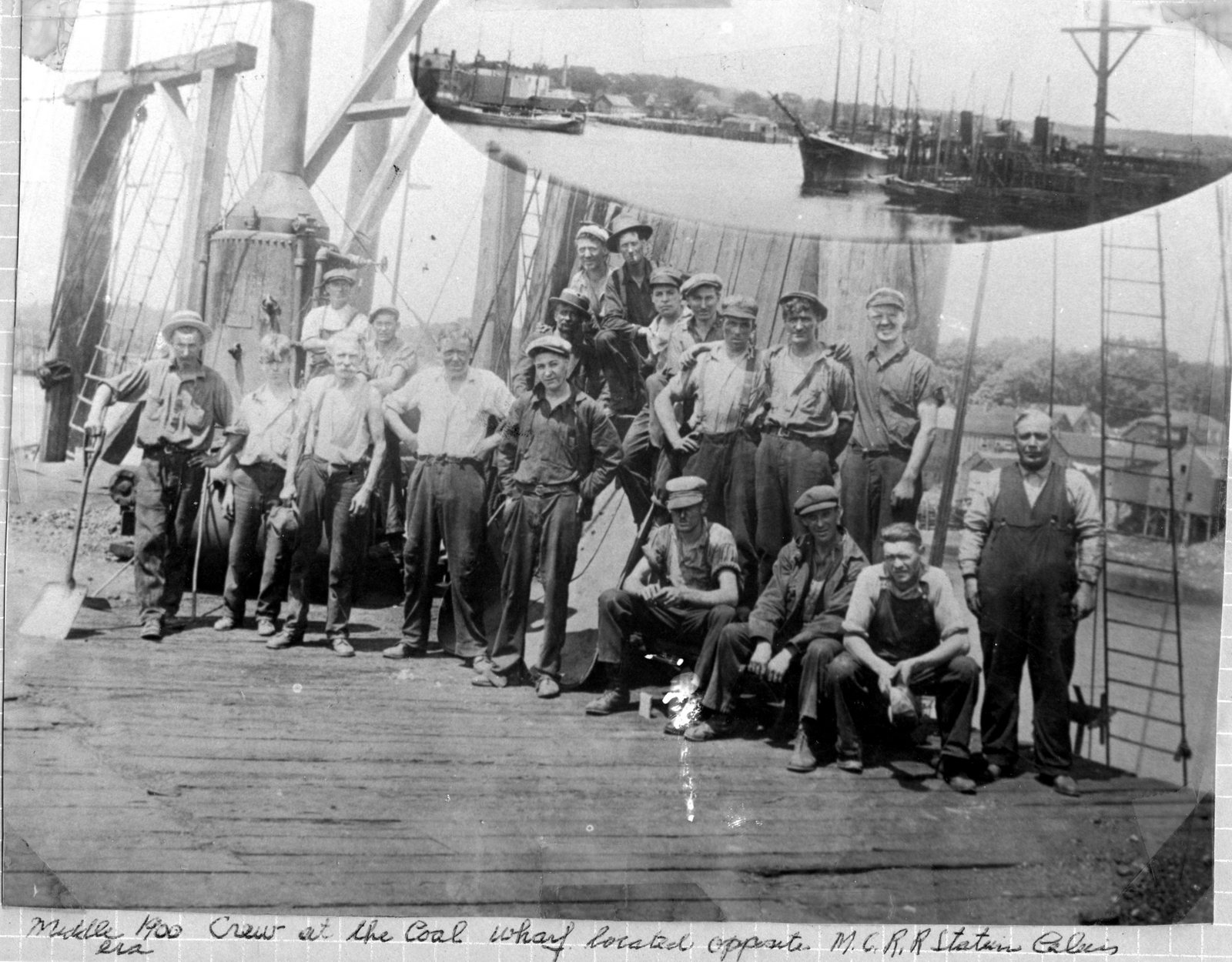
A crew waiting to unload a schooner loaded with coal on Calais waterfront
A March 1922 article in the Portland Express tells of the travails of the Ricamaron, a coal collier, loaded with soft coal on the Norfolk-Calais run leaking badly and putting into port in New York. Not a very exciting bit of news except it was March and, in the spring, coal supplies in the St. Croix Valley were often at distressing low levels especially when the ice went out late.
Until the 1950’s coal heated most Calais homes. Every cellar had a window dedicated to the coal chute down which coal was funneled to the coal bin. Remnants of the coal can still be found in Calais cellars today. The coal wharf was behind the Heritage Center.
Mike Foggia on right and son Frank at the the family store in the Woodland Opera House
1922 article Frank Foggia
The Foggia family of Woodland came to Woodland with the hundreds of Italian immigrants who built the Woodland Mill and much else in this area. They are one of the founding families of Woodland. We don’t believe Frank became a surgeon, but he served Woodland as its town manager for 36 years which may be some sort of record. Town Managers have historically short life expectancies but like his father, Mike, Frank was dedicated to his town and its people.
Other items of local interest from the national papers in 1922:
Frank Mouette of Calais was pitching Phos-Pho Vitamins in national newspapers in 1922. Frank claims Phos-Pho cured him of rashes, indigestion and other ailments. The vitamins may have worked but there is no record of any such person living in Calais in 1922 or any other time.
A fellow named Frank Keaton robbed the bank in Danforth but got little money, was caught and confessed. Frank was “committed to the hospital for the insane for observation.”
Calais was a preferred entry point for illegal immigrants in the 1920’s. Many had managed to get to Halifax or St. John. One, a Hungarian, had been deported from New York in 1922 but escaped his ship when it arrived in St. John. Caught in Calais he was again deported. Many workers from the Maritimes were deported through Calais in the 1920’s not because they were necessarily undesirables but on technicalities after complaints they were taking jobs from locals. Woodcutters were the main focus of this policy.
On November 17, 1922, it was reported that William Ashford of St. Stephen shot a 200-pound albino deer in Watt Junction, New Brunswick.
In October 1922 a Princeton girl named Mary Sanphy won a prestigious essay contest organized by Henry Morgenthau, then Ambassador to Turkey.
On a more somber note:
In 1922 newspapers throughout country reported:
One Seriously Injured In Knife Duel
Calais Me Oct 8
A fight between two schoolboys ended today when Gerald Ryan 18 was stabbed in the throat with a jackknife by Raymond Card, age 13. The blade was driven into Ryan’s neck nearly three inches. The boy’s condition was said to be serious tonight. Young Card was arraigned in the municipal court on a charge of assault and held on $4000 bail which was furnished by relatives
We found no more information on the court case. We did determine Raymond Card was born in Milltown Maine in 1909 to Lincoln Card and Christina McLean Card of St. Stephen. He married Violet Campbell of Freeport in 1939 and died in Pompano Beach Florida in 1984. As to Gerald Ryan we know only that he recovered from his injuries after surgery at the Calais Hospital on Church Street.
The saddest newspaper report of 1922 was of the death of William B. Guest, an electrician with the St. Croix Paper Company. He drowned near Grand Falls “in a vain effort to save the life of his four-year-old son Freddie, who had fallen into the river. The body of the father was recovered. His wife and three children survive.” His son’s body was recovered 9 days later
There were two instances locally of gunshot wounds to the head. Carl Armstrong died on April 10, 1922, with “a bullet wound in his right temple. A revolver was found beside the body.” The death was ruled accidental as was the shooting of Dr. J. Walker Moore of St. Stephen, whose revolver was “was accidentally discharged.” The doctor survived but questions undoubtedly remained about both cases.
We’ll finish with a local story which was published in every newspaper in the country in 1922. What must the country have thought of Downeasters!
